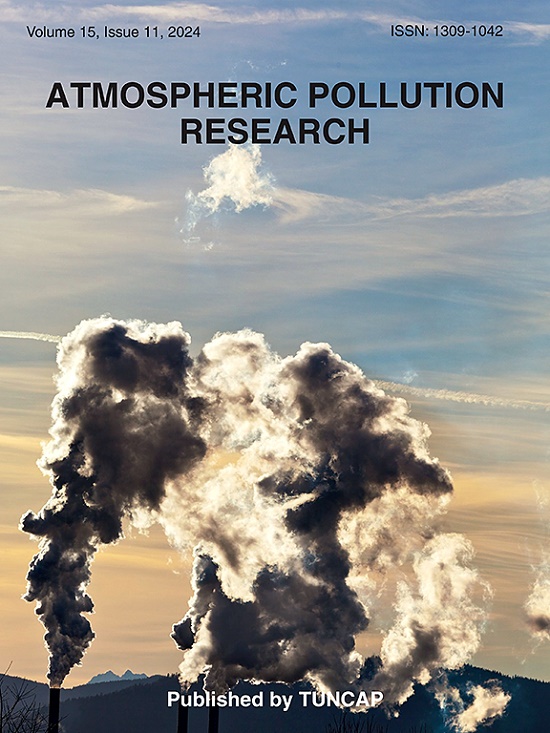Coincidence effect of a low-cost particulate matter sensor: Observations from environmental chamber tests at diverse particle concentrations
IF 3.5
3区 环境科学与生态学
Q2 ENVIRONMENTAL SCIENCES
引用次数: 0
Abstract
Particulate matter (PM) poses significant environmental and public health concerns, particularly in urban areas, where elevated PM levels are associated with increased risks of respiratory and cardiovascular diseases. This study assesses the performance of the PMS7003, a low-cost portable PM sensor (LCS) based on light-scattering technology, under controlled environmental chamber conditions. The PMS7003 measures PM concentrations by detecting the intensity of light scattered by particles passing through a detection zone. Our findings reveal that the LCS provides relatively accurate measurements of PM1.0, with an underestimation of only 4%. However, it significantly overestimates larger particles, with an overestimation of 72% for PM2.5 and 92% for PM10. This discrepancy is attributed to the coincidence effect, where multiple smaller particles are misidentified as larger ones when they pass through the detection zone simultaneously. Additionally, the LCS exhibits a saturation limit at high PM concentrations, leading to deviations from reference sensor readings. While prior research has largely focused on environmental factors such as humidity and temperature, this study specifically investigates the impact of the coincidence effect on sensor performance. The results highlight both the advantages and limitations of LCS, emphasizing the need for advanced calibration methods to improve data reliability for public health and environmental monitoring.

低成本颗粒物传感器的重合效应:不同颗粒物浓度环境室试验的观察结果
颗粒物造成严重的环境和公共卫生问题,特别是在城市地区,颗粒物水平升高与呼吸系统和心血管疾病的风险增加有关。本研究评估了基于光散射技术的低成本便携式PM传感器PMS7003在受控环境条件下的性能。PMS7003通过检测通过检测区的粒子散射光的强度来测量PM浓度。我们的研究结果表明,LCS提供了相对准确的PM1.0测量值,仅低估了4%。然而,它明显高估了较大的颗粒,PM2.5和PM10分别高估了72%和92%。这种差异归因于巧合效应,即多个较小的粒子在同时通过检测区域时被误认为较大的粒子。此外,LCS在高PM浓度下表现出饱和极限,导致与参考传感器读数的偏差。虽然之前的研究主要集中在湿度和温度等环境因素上,但本研究专门研究了巧合效应对传感器性能的影响。结果突出了LCS的优点和局限性,强调需要先进的校准方法来提高公共卫生和环境监测的数据可靠性。
本文章由计算机程序翻译,如有差异,请以英文原文为准。
求助全文
约1分钟内获得全文
求助全文
来源期刊

Atmospheric Pollution Research
ENVIRONMENTAL SCIENCES-
CiteScore
8.30
自引率
6.70%
发文量
256
审稿时长
36 days
期刊介绍:
Atmospheric Pollution Research (APR) is an international journal designed for the publication of articles on air pollution. Papers should present novel experimental results, theory and modeling of air pollution on local, regional, or global scales. Areas covered are research on inorganic, organic, and persistent organic air pollutants, air quality monitoring, air quality management, atmospheric dispersion and transport, air-surface (soil, water, and vegetation) exchange of pollutants, dry and wet deposition, indoor air quality, exposure assessment, health effects, satellite measurements, natural emissions, atmospheric chemistry, greenhouse gases, and effects on climate change.
 求助内容:
求助内容: 应助结果提醒方式:
应助结果提醒方式:


